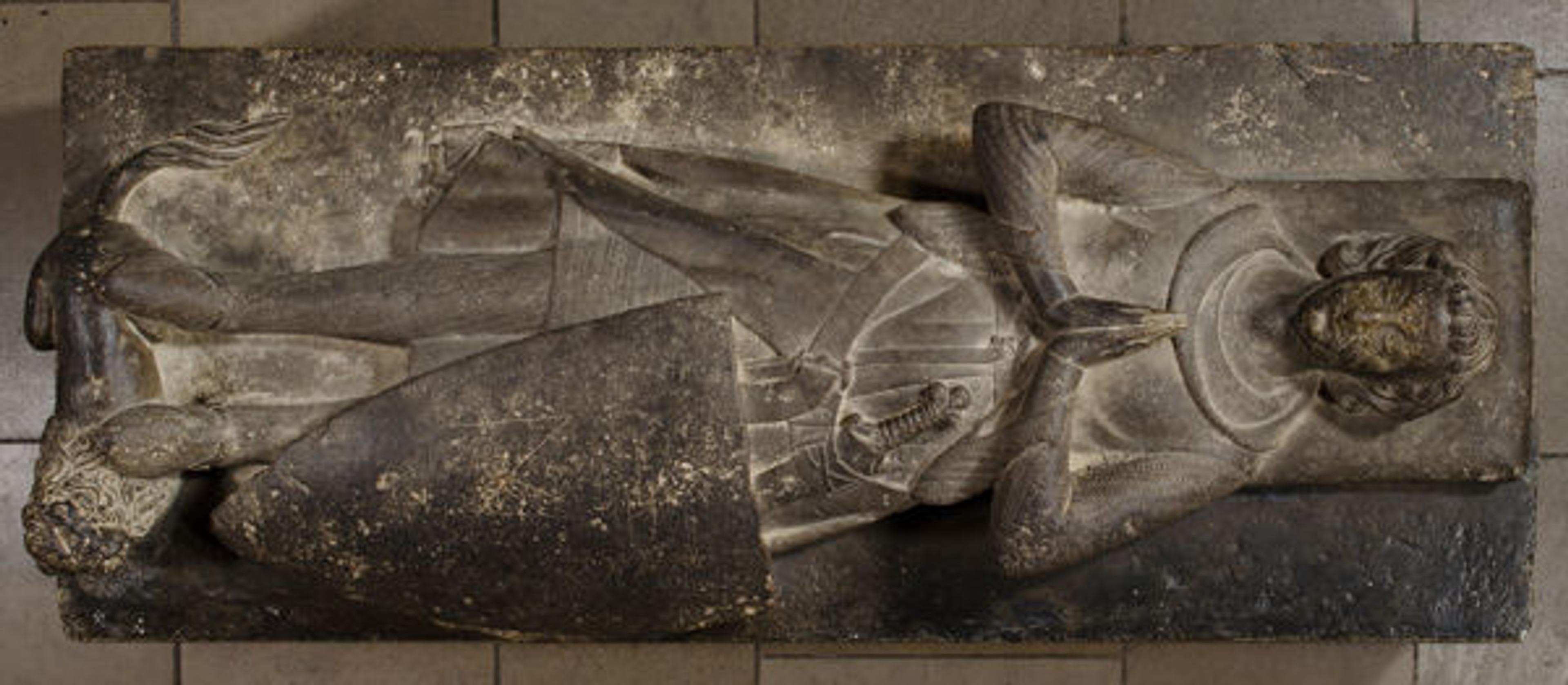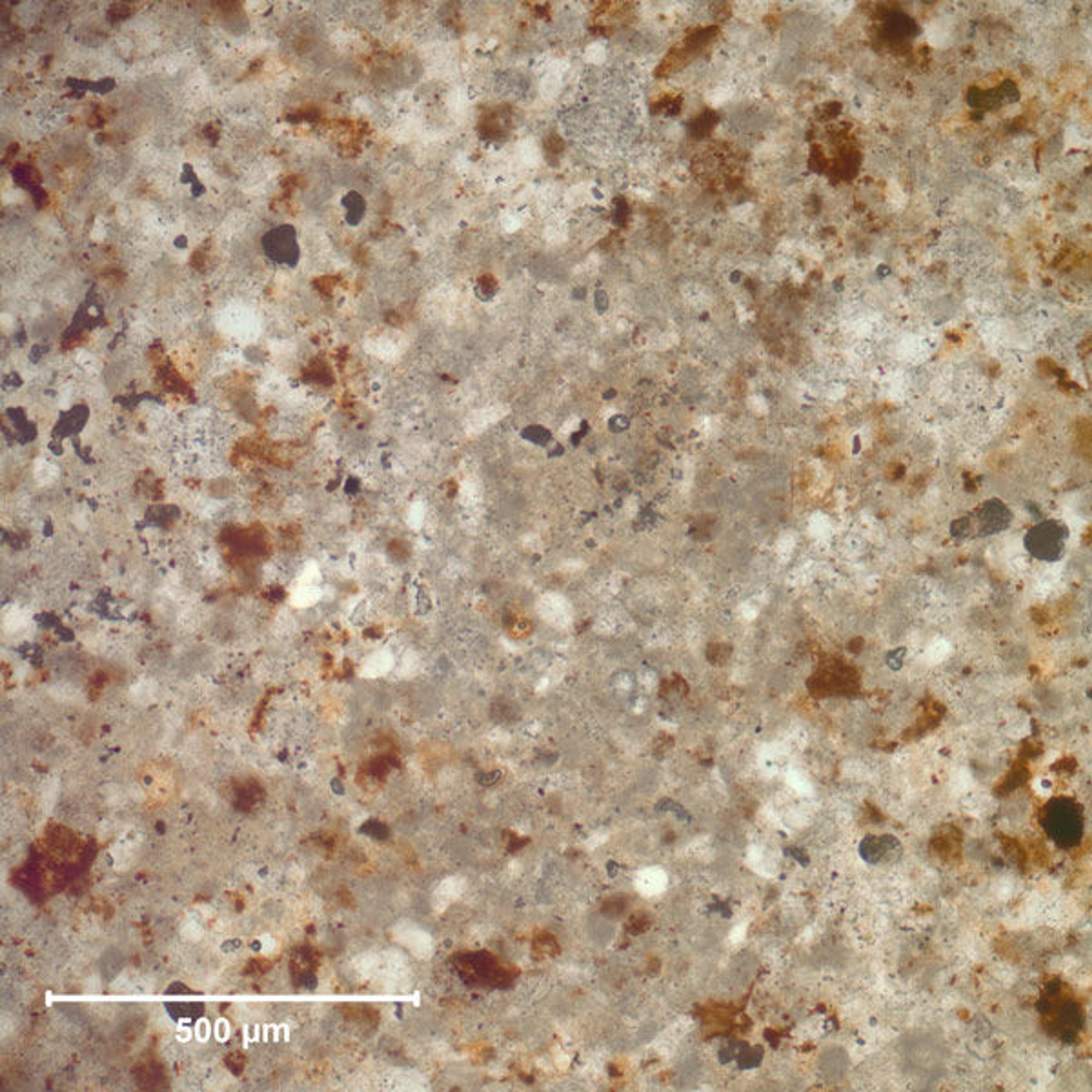
Conservator Lucretia Kargère working on the tomb effigy of Jean d'Alluye in the Gothic Chapel at The Cloisters
«Conservation treatments are not often performed on works of art in public. The process is lengthy and requires extreme concentration, and treatments usually need to be performed in fully equipped laboratories. The sight of a work in the process of being conserved might also come as a shock to passersby; seeing a work of art in its "stripped" state—where all fills and old restorations have been removed—is like seeing a celebrity un-Photoshopped or without makeup.»
For the past six months, I have been conserving the tomb effigy of Jean d'Alluye at The Cloisters museum and gardens in situ, with only ropes and a poster stand separating me from public view. This mid-thirteenth-century effigy is thought to represent Jean d'Alluye, a knight of Philip Augustus and one of the principal nobles of the Loire Valley, and to come from the French Abbey of La Clarté-Dieu, a Cistercian monastery in Touraine.

The tomb effigy of Jean d'Alluye before treatment
The effigy has significantly darkened over time from grime, hand-oil residues, and tarnishes acquired throughout its complex history. Although its current state is partially concealed by the dim lighting of the Gothic Chapel, the sculpture's condition will be clearly visible in the spring of 2016, when the work will be part of the exhibition Jerusalem in the Middle Ages in the Museum's Main Building. So it is time for Jean d'Alluye to get ready for his close-up!
What exactly goes on in a conservator's mind while he or she performs the slow process of cleaning a surface? We like to think the process is analogous to a detective's use of forensic skills during an investigation; every minute detail on a surface opens a window of information that can be further scrutinized with scientific equipment. A conservator's eyes, enhanced by head loupe and microscope, are the first tools to generate a diagnosis before treatment. Once a course of action is determined, the conservator's movements are minutely orchestrated, and the process involves nearly all the senses: sight, touch, hearing, and sometimes even smell. A conservator's investigative repertoire includes looking for visual cues, feeling the way in which cotton swabs and Mars pencil erasers glide over the work's surface, listening to the sound the swabs make, and using particular solvents.
A conservator's work is further informed by extensive scientific analysis of the object's materials and techniques, as well as an assessment of the processes of deterioration at hand. In the case of the tomb of Jean d'Alluye, thin-section analysis was performed for petrographic examination with a hair-thin slice of stone mounted on a microscope slide. The stone was identified by the LRMF (Laboratoire de Recherche des Musées de France) as Apremont stone, a so-called noble stone: fine-grained, semi-hard, and quarried about 162 miles east of La Clarté-Dieu down the Loire River. The condition of the stone was also fully documented and evaluated.

Thin-section slide of stone from the sculpture identifying its origins at Apremont
Finally, because stone effigies were commonly painted, and because we assume that the knight's carved shield exhibited a colorful coat of arms, the surface was thoroughly investigated for the presence of paint residues. Although minute traces of color have been detected on the stone surface, none was identified as original.
The treatment of the tomb effigy of Jean d'Alluye is gradually proceeding as I carefully work on each curve and detail. The process is exceedingly slow, but the story mesmerizing.

Photograph taken during the treatment of the tomb effifgy of Jean d'Alluye
Related Link
Conservation and Scientific Research